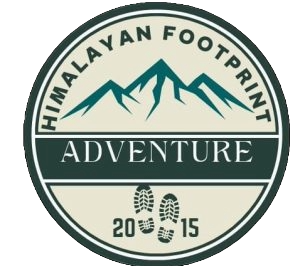Gosainkunda Trek
Gosainkunda Trek
Gosaikunda, often spelled as Goshaikunda, is a sacred alpine lake situated in the Langtang National Park, Nepal. It holds significant religious importance for both Hindus and Buddhists. At an altitude of about 4,380 meters (14,370 feet), Goshaikunda is a cluster of freshwater lakes nestled amid the majestic Himalayas. According to Hindu mythology, these lakes are believed to have been created by Lord Shiva’s trident, and the largest lake is considered the abode of Shiva himself. Each year, especially during the Janai Purnima festival in August, numerous pilgrims embark on a spiritual journey to Goshaikunda to take a holy dip in its waters, seeking blessings and spiritual purification. Beyond its religious significance, Goshaikunda also attracts trekkers and nature enthusiasts due to its stunning natural beauty, surrounded by snow-capped peaks, diverse flora and fauna, and a serene, tranquil ambiance in the heart of the Himalayas.
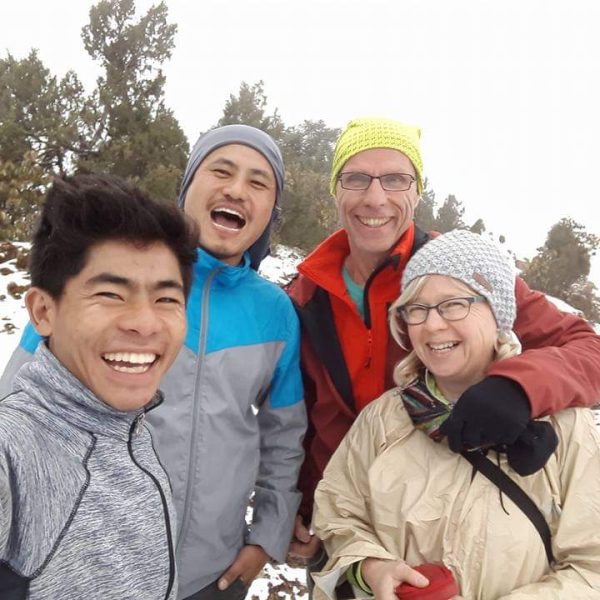
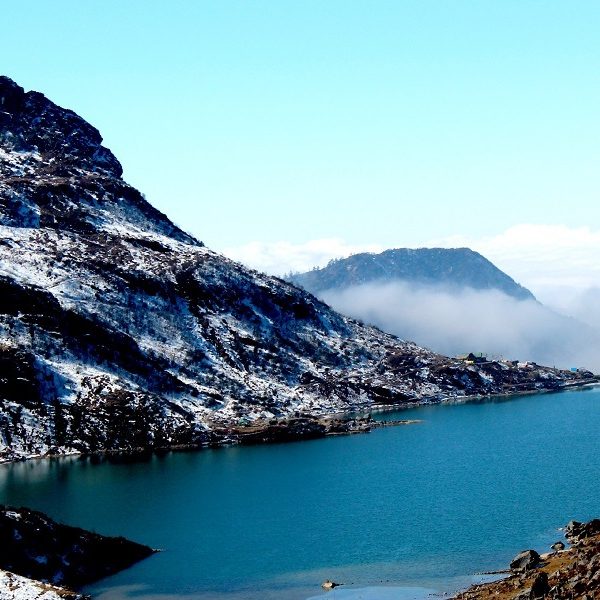
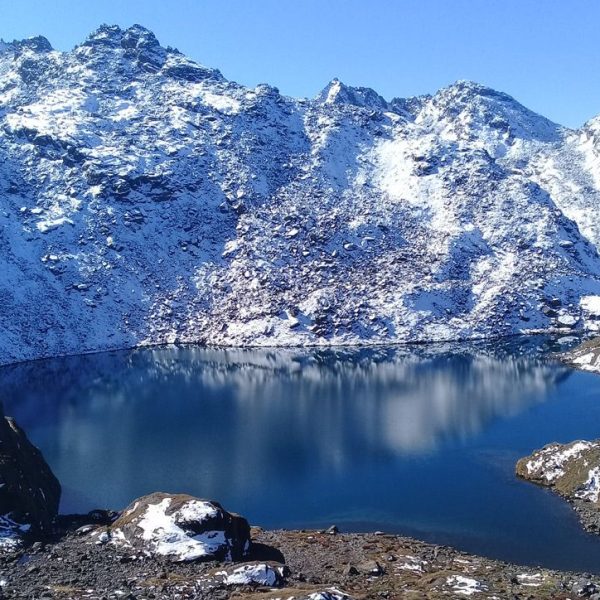
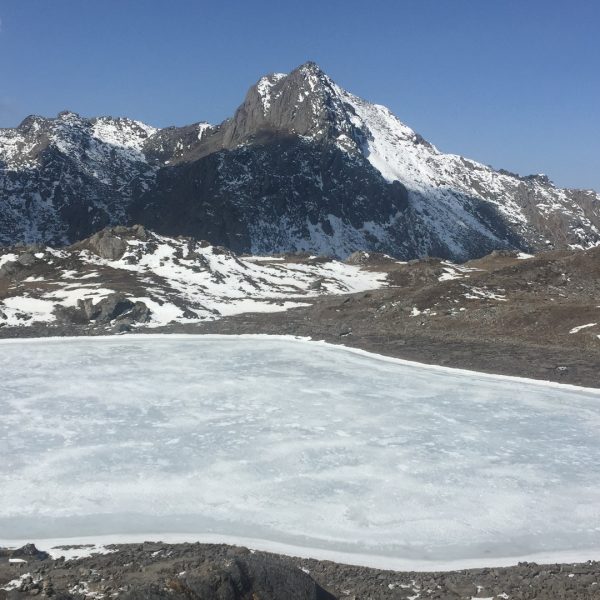
Location and Route: The Goshaikunda Trek is a popular trekking route in Nepal, situated in the Langtang National Park. It typically starts from Dhunche or Syabrubesi and winds through lush forests, terraced fields, and diverse landscapes. The trek reaches its climax at the sacred alpine lakes of Goshaikunda, a cluster of freshwater lakes nestled at an altitude of about 4,380 meters (14,370 feet).
Scenic Beauty and Biodiversity: This trek offers breathtaking vistas of snow-capped peaks, including Langtang Lirung, Ganesh Himal, and Dorje Lakpa, among others. Trekkers encounter diverse ecosystems ranging from subtropical to alpine, passing through rhododendron forests, bamboo groves, and high-altitude meadows. The biodiversity along the trail includes various flora and fauna, making it an enriching experience for nature enthusiasts.
Cultural Significance: The region holds significant religious importance for both Hindus and Buddhists. Goshaikunda is believed to be a sacred site where the Hindu deity Shiva is said to reside, and pilgrims often visit during the Janai Purnima festival in August. The area also features monasteries, prayer flags, and chortens that reflect the rich Buddhist culture of the region.
Challenging Terrain and Altitude: The Goshaikunda Trek involves moderate to challenging terrain with steep ascents, descents, and narrow trails. Trekkers need to acclimatize properly as they ascend to higher elevations to avoid altitude-related issues. The trek reaches its highest point at Lauribina Pass (4,610 meters or 15,125 feet) before descending towards the lakes.
Duration and Best Time to Visit: The trek typically takes around 7 to 10 days, depending on the starting point and itinerary. The best times to embark on this trek are during the spring (March to May) and autumn (September to November) seasons when the weather is generally clear, offering stunning views and comfortable trekking conditions. During these seasons, the skies are usually clearer, and the trails are less affected by monsoon rains or harsh winter conditions.
Day 1: Kathmandu to Dhunche (1,950 meters / 6,398 feet)
Day 2: Dhunche to Sing Gompa (3,330 meters / 10,925 feet)
Day 3: Sing Gompa to Goshaikunda (4,380 meters / 14,370 feet)
Day 4: Goshaikunda to Ghopte (3,440 meters / 11,286 feet) via Lauribina Pass (4,610 meters / 15,125 feet)
Day 5: Ghopte to Tharepati (3,640 meters / 11,942 feet)
Day 6: Tharepati to Kutumsang (2,470 meters / 8,104 feet)
Day 7: Kutumsang to Chisapani (2,165 meters / 7,103 feet)
Day 8: Chisapani to Sundarijal (1,460 meters / 4,790 feet), drive back to Kathmandu
Included
- Experienced Guide
- Porter
- 3 Times a Meal According the choice of Guest
- 3 Times Hot Drink
- Seasonal Fruits
- All Required Equipment’s
- All the Transportation Fee During Programmer
- Airport Pick Up & Drop
- All the Accommodation During Trek
- Sight Seeing (UNESCO World Heritage Sites)
- Accommodation In Kathmandu (Tourist Standard Hotel/Star Hotel)
- First Aid Service
- Trekking Gears If Required (Crampon, Ice-Axe , Rope, Oxygen Cylinder, Sleeping Bag, Hot Water Bag)
- Staff Insurance (Guide, Ass Guide, Porter, Cook, Ass Cook)
- Food & Accommodation For Field Staffs
- Staff Equipment
Not Included
- Tips For Nepali Field Staffs (Tipping is the tradition of tourism in Nepal, every trekkers Expect some tips from the clients at the end of program. Normally we recommend 15-25% tips to guide & 10-15% tips to other field Staffs)
- International Flight
- Travel Insurance & Visa fees
- All the Beverages
- Extra Expenses (Personal Shopping, Personal Transportation, Extra Activities if it is not in the program)
Clothing:
- Outer Shell Jacket: Waterproof and windproof jacket for protection against the elements.
- Hiking Pants: Comfortable, moisture-wicking pants that are easy to move in.
- Rain Pants: Waterproof pants for rain and wet conditions.
- Gloves: Insulated gloves for warmth and protection.
- Hat: Warm hat to cover your head and ears.
Footwear:
- Hiking Boots: Sturdy, comfortable hiking boots with ankle support.
- Socks: Moisture-wicking and warm socks. Consider bringing a few pairs.
Accessories:
- Backpack: Comfortable daypack to carry your essentials.
- Sunglasses: UV-protective sunglasses with good coverage.
- Sunscreen: High SPF sunscreen to protect your skin from high-altitude sun.
- Lip Balm: With SPF to prevent chapped lips.
- Headlamp: Essential for any early morning or late evening activities.
Sleeping Gear:
- Sleeping Bag: Warm and suitable for the expected temperatures.
Hydration and Nutrition:
- Water Bottles: Carry water bottles to stay hydrated.
- Snacks: Energy bars, trail mix, and other high-energy snacks.
- Water Purification: Water purification tablets or a filtration system.
Miscellaneous:
- First Aid Kit: Including basic medications, bandages, blister treatment, etc.
- Personal Identification: Passport, permits, and any other necessary documents.
- Camera: If you want to capture the breathtaking views.
- Power Bank: To keep your electronics charged.
- Toiletries: Toilet paper, hand sanitizer, and other personal hygiene items.
Optional Gear:
- Trekking Gear Rental: You can rent some equipment in Nepal, such as sleeping bags and trekking poles.
- Portable Altitude Chamber (PAC): For altitude-related emergencies, if you’re concerned about altitude sickness.
1-3 Pax 675 USD
4-10 Pax 500 USD
Above 10 Pax 410 USD
